The Kodak Baby Brownie Special
The Kodak Baby Brownie special was introduced in 1938/39 as a replacement for the Kodak Baby Brownie. It was a small, little box type camera comprised of bakelite.
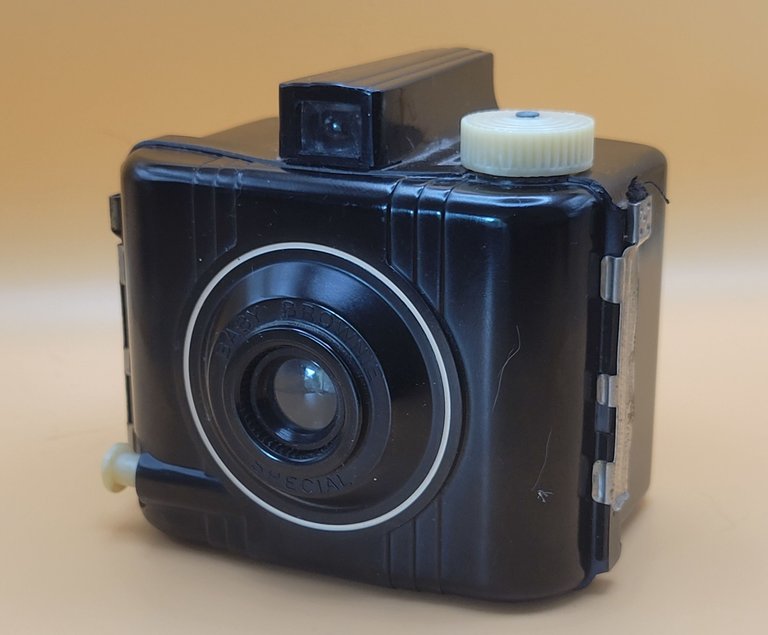
There is nothing fancy about this camera: it has a view finder the roughly approximates the resulting picture, a shutter release, and a film forward knob. There are no features for aperture control or shutter speed. The shutter speed was approximately 1/40 of a second, and the aperture a fixed f/11. That’s it. Simple as that.
The Kodak Baby Brownie Special was made of Bakelite, a type of plastic that was widely used for consumer products at the time. Bakelite was durable, lightweight and inexpensive, making it ideal for mass production. The camera body was made in two halves, held together by a sliding latch on either side for film loading. The front panel carried the shutter, lens and film transport, while the back box had only the viewfinder and red window.
The Kodak Baby Brownie Special used 127 film, which was also known as Vest Pocket film. This film format was introduced by Kodak in 1912 and was popular until the 1960s. It produced eight 3¼ x 3 inch photographs per roll, which were slightly larger than the standard 35mm format. The film was wound manually by turning the knob on the top right of the camera.
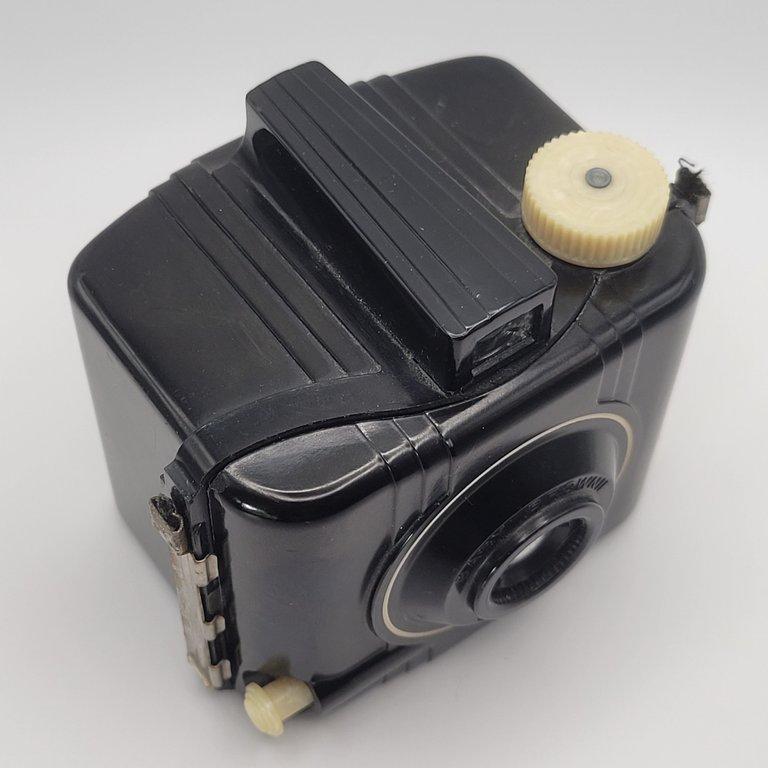
I do not have any 127 sized film. There is a place in China that sells some with mixed reviews; mixed enough that I am wary of spending upwards of $15 per roll (including shipping) just to try it out. I’m not against the idea, however, of ripping open a cannister of 35mm film to use in it’s place.
For comparison, here is a 35mm film spindle on the left, and a 127 format film spindle on the right.
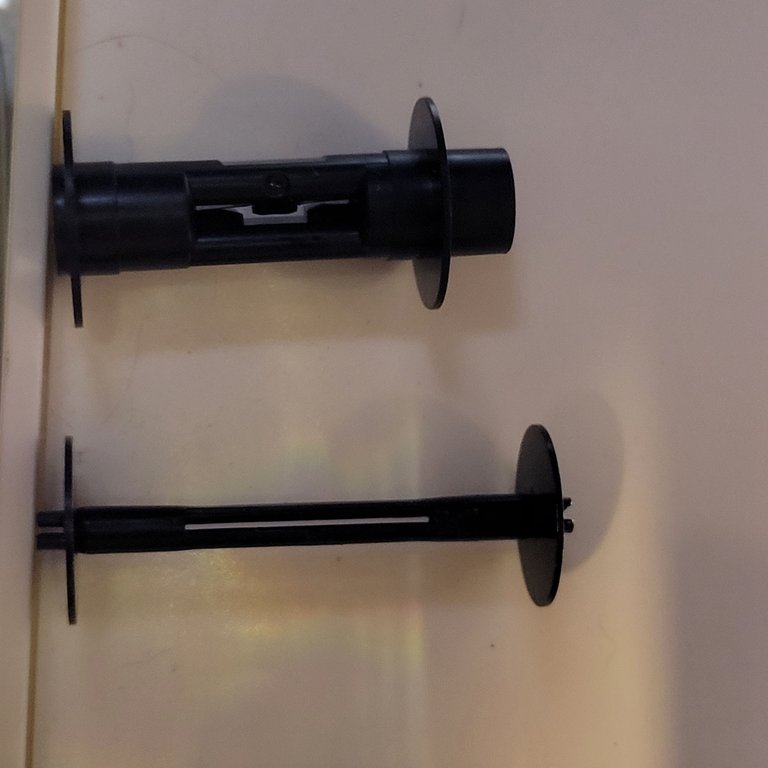
127 format film is paper backed. Paper-backed film has a paper layer behind the light-sensitive emulsion. This paper protects the film from exposure to light and allows it to be loaded and unloaded in daylight. The paper also has frame numbers printed on it, which can be seen through a red window on the back of some cameras. Paper-backed film comes in different sizes and formats, such as 120, 220, 127. Paper-backed film was popular for amateur and professional photography until it was replaced by cartridge film or digital cameras, though 120 film is still readily available.
I was able to use a film changing bag to essentially re-roll a roll of 35mm film onto a 127 format spindle and load it into the camera. Because this film is not, however, paper backed, I also had to put a piece of electric tape over the red window on the back of the camera to avoid light leakage. With this set up I would not be able to determine just how far I was advancing the film after each exposure; to compensate, I twisted the film forward knob 1.5 rotations to ensure there were no accidental double exposures.
Due to the nature of using a smaller film in a larger bracket, and then using a 35mm film scanner to scan the film, I ended up needing to manually stich the final photos together. Some of them turned out alright. Others turned out less alright. I did not use a caffenol recipe to develop this film; I used the last of my Cinestill DF96 and think that I didn’t develop it for as long as I should have. Oops. It’ll be back to caffenol for the next one.
I’m actually pretty happy with it and the results, enough that I really might find some 127 format rolled film to give it a try next time.
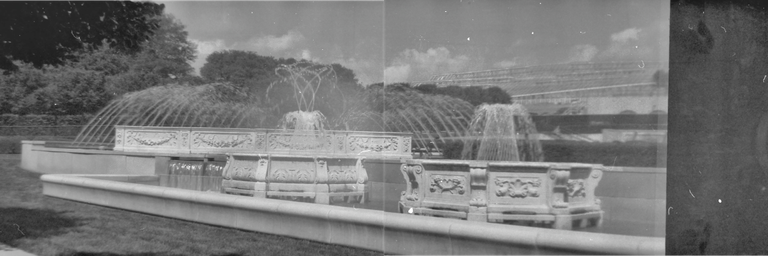
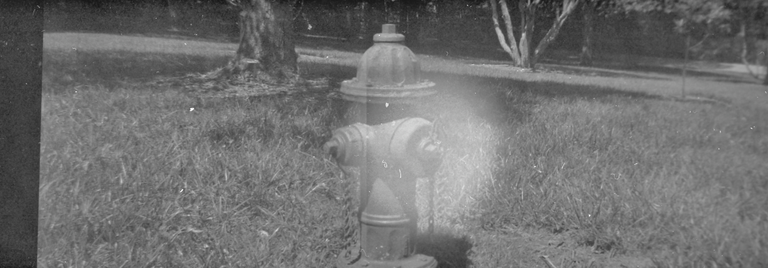
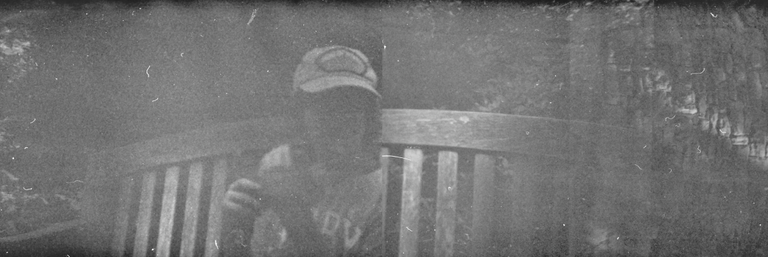
My other film cameras:
- Kodak Duaflex II
- Kodak Tourist
- Agfa B2 Cadet
- Agfa Pioneer
- Brownie Special Six-16
- Kodak Flashmite 20
- Exakta VX
- Graflex 22
- Kodak Retina II
- Canon FT QL
- Zenith Comet
- Kodak No. 1 Autographic
(c) All images and photographs, unless otherwise specified, are created and owned by me.
(c) Victor Wiebe
Blind Skeleton
Online Radio! 24x7 of OTR classics:
Live shows:
- Three Tune Tuesday Live Stream: 12:00pm (noon) EST
- Electric Dreams Live Stream: 2nd and 4th Wednesdays, 8:30pm EST
The Skeleton Brew coffee shop is open!

I really need to start scrolling down on this community! Too many posts are tacked to the top so I thought it was a dead community. Glad to see recent stuff here!
I've seen one of the Baby Brownies in a local antique shop, unfortunately it wasn't working so I didn't get it. It's cool to see you found a working one and had the ingenuity to load up a spool for it. I'm not quite there yet with my skills, but perhaps one day I'll be facing my own challenge with a 127 camera and you'll be the first place I go to to see how it's done. 😊
It was definitely a learning experience for me. Rolling the film onto the spool in a dark film changing bag was a nuisance, but something I could probably do again. In hindsight, I think the biggest issue with how the pictures turned out was that I did not use a flat film adapter in the back of the camera to prevent light splatter. The next time I do this (and I probably will, since I have other 127 format sized cameras) I'll probably 3d print that piece to help out.